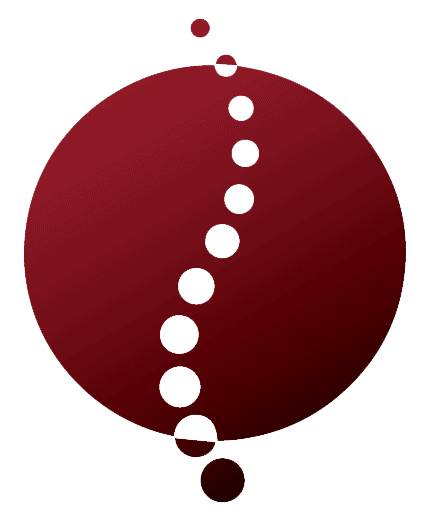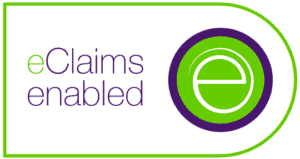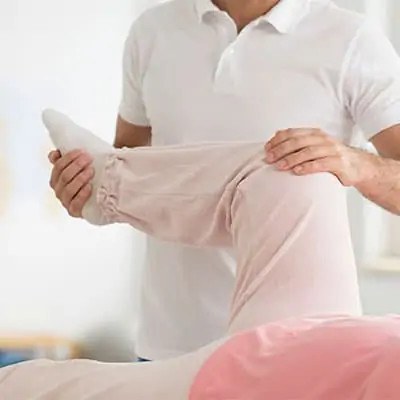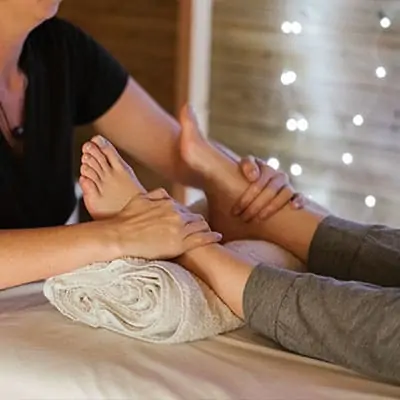Understanding Scoliosis
What is Scoliosis?
Scoliosis is a medical condition where the spine curves sideways, forming an “S” or “C” shape. This curvature can occur in different parts of the spine and varies in severity. Scoliosis is classified based on its origin and the age of onset. The main types include idiopathic, congenital, and neuromuscular scoliosis.
| Scoliosis Type | Description |
|---|---|
| Idiopathic Scoliosis | Most common, cause unknown, typically diagnosed during adolescence |
| Congenital Scoliosis | Present at birth, due to spinal abnormalities |
| Neuromuscular Scoliosis | Associated with neuromuscular diseases like cerebral palsy or muscular dystrophy |
To learn more about the types and causes of scoliosis, visit our detailed page on scoliosis types and scoliosis causes.
Importance of Early Detection
Early detection of scoliosis is crucial for effective management and treatment. Identifying scoliosis symptoms at an early stage can prevent the condition from worsening and reduce the need for invasive treatments. Regular screening, especially in children and adolescents, plays a vital role in early diagnosis.
| Age Group | Recommended Screening Frequency |
|---|---|
| Children (10-15 years) | Annually during growth spurts |
| Adults | Every 5 years or upon noticing symptoms |
Regular check-ups and scoliosis screenings are essential components of early detection. For more information on how scoliosis is diagnosed, visit our page on scoliosis screening and scoliosis diagnosis.
Early intervention may include observation, bracing, or specific exercises. Learn more about these options in our sections on scoliosis treatment and scoliosis exercises.
Common Symptoms of Scoliosis
Recognizing the symptoms of scoliosis early can help in seeking timely treatment. Here are some common signs to watch for:
Uneven Shoulders
One of the most noticeable signs of scoliosis is uneven shoulders. You may observe that one shoulder appears higher than the other, which can indicate a curvature in the spine.
Uneven Waist
An uneven waist is another indicator of scoliosis. This symptom manifests as one side of the waist appearing higher or more pronounced than the other.
Prominent Shoulder Blade
A prominent shoulder blade is often a sign of scoliosis. This occurs when one shoulder blade sticks out more than the other, creating an asymmetrical appearance.
Uneven Hips
Uneven hips are a common symptom of scoliosis. This condition can cause one hip to be higher than the other, leading to an imbalance in posture.
Back Pain
Back pain is frequently associated with scoliosis, especially in adults. The pain can range from mild to severe and may affect daily activities. For more information on managing scoliosis-related pain, visit our article on scoliosis pain.
Changes in Posture
Changes in posture are often linked to scoliosis. You might notice a shift in your body alignment, such as leaning to one side. This can affect overall balance and movement.
| Symptom | Description |
|---|---|
| Uneven Shoulders | One shoulder higher than the other |
| Uneven Waist | One side of the waist higher |
| Prominent Shoulder Blade | One shoulder blade sticks out more |
| Uneven Hips | One hip higher than the other |
| Back Pain | Ranges from mild to severe |
| Changes in Posture | Noticeable shift in body alignment |
Understanding these symptoms can aid in early detection and prompt scoliosis treatment. Regular check-ups and scoliosis screening are essential for monitoring the condition and maintaining spinal health.
Diagnosis and Screening
Proper diagnosis and screening are crucial in identifying scoliosis symptoms and determining the appropriate treatment approach.
Physical Examination
During a physical examination, your healthcare provider will look for visible signs of scoliosis. This may include checking for uneven shoulders, an uneven waist, a prominent shoulder blade, or uneven hips. The Adam’s Forward Bend Test is commonly used to help detect scoliosis. In this test, you will be asked to bend forward at the waist with your arms hanging loose. The examiner will then observe your back for any asymmetry or abnormal curvature.
| Symptom | Description |
|---|---|
| Uneven Shoulders | One shoulder higher than the other |
| Prominent Shoulder Blade | One shoulder blade more noticeable |
| Uneven Waist | One side of the waist higher |
| Uneven Hips | One hip higher than the other |
Imaging Tests
If scoliosis is suspected based on the physical examination, imaging tests are often recommended to confirm the diagnosis and assess the severity of the spinal curvature. The most common imaging tests used for diagnosing scoliosis include:
- X-rays: X-rays provide a clear view of the spine and help measure the degree of curvature.
- MRI (Magnetic Resonance Imaging): MRI scans may be used to get a detailed view of the spine, especially if there are concerns about spinal cord abnormalities.
- CT Scan (Computed Tomography): CT scans offer a more detailed image of the spine and can be useful in complex cases.
| Imaging Test | Purpose |
|---|---|
| X-rays | Measure degree of curvature |
| MRI | Detailed view of spine and spinal cord |
| CT Scan | Detailed image for complex cases |
Monitoring Progression
Once scoliosis is diagnosed, monitoring the progression of the spinal curvature is essential. Regular follow-up appointments are necessary to track changes over time. The frequency of these appointments depends on factors such as the severity of the curve, the patient’s age, and the stage of growth.
| Monitoring Frequency | Factors |
|---|---|
| Every 4-6 months | Rapid growth phase in children |
| Annually | Stable curves in adults |
Monitoring may involve repeated physical examinations and imaging tests to ensure the condition is not worsening. If progression is noted, adjustments to the treatment plan may be necessary. For more detailed information on scoliosis diagnosis and scoliosis screening, you can explore our related articles.
By understanding the process of diagnosis and screening, you can take the necessary steps to manage and treat scoliosis effectively.
Treatment Options
When it comes to managing scoliosis, several treatment options are available depending on the severity and progression of the curve. Understanding these options can help you make informed decisions about the best course of action.
Observation
For mild cases of scoliosis, observation may be the recommended approach. This involves regular check-ups to monitor the progression of the spinal curve. During these visits, your healthcare provider will assess whether the curve is worsening and determine if additional intervention is needed.
| Observation Schedule | Frequency |
|---|---|
| Initial Diagnosis | Every 4-6 months |
| Mild Scoliosis | Every 6-12 months |
| Moderate Scoliosis | Every 3-4 months |
Observation is often suitable for growing children and adolescents, as well as adults with minor curves that are not causing significant symptoms. For more information on the importance of regular check-ups, visit our article on scoliosis awareness.
Bracing
For individuals with moderate scoliosis, bracing can be an effective treatment to prevent further curvature of the spine. Bracing is typically recommended for children and adolescents who are still growing. The goal of bracing is to halt the progression of the curve and avoid the need for surgery.
There are different types of scoliosis braces, each designed to fit the unique needs of the patient. The brace must be worn for a specified number of hours each day to be effective. Compliance with the bracing schedule is crucial for achieving the desired outcomes.
| Brace Type | Recommended Wear Time |
|---|---|
| Full-Time Brace | 18-23 hours/day |
| Nighttime Brace | 8-10 hours/night |
For a more detailed look at different braces and their uses, check out our article on scoliosis brace.
Surgery
In severe cases of scoliosis, surgery may be necessary to correct the spinal curvature and prevent further complications. Surgical treatment typically involves spinal fusion, where the vertebrae are fused together to stabilize the spine. This procedure aims to reduce the curvature and provide long-term stability.
Surgery is usually considered when the spinal curve exceeds 40-50 degrees or when there is significant pain, respiratory issues, or other complications related to the curvature. Your healthcare provider will discuss the risks and benefits of surgery to help you make an informed decision.
| Surgical Indications | Curve Degree |
|---|---|
| Severe Curvature | > 40-50 degrees |
| Significant Pain | N/A |
| Respiratory Issues | N/A |
For more information on the surgical options and what to expect, read our article on scoliosis treatment.
By understanding these treatment options, you can take control of your scoliosis management and work with your healthcare provider to determine the best approach for your individual needs. Regular monitoring and timely intervention can help you maintain a healthy and active lifestyle. For additional support and resources, explore our articles on scoliosis exercises and scoliosis physical therapy.
Living with Scoliosis
Living with scoliosis involves managing both the physical and emotional aspects of the condition. Understanding how to integrate treatments like physical therapy, seeking emotional support, and maintaining regular medical check-ups can greatly improve your quality of life.
Physical Therapy and Exercise
Physical therapy plays a crucial role in managing scoliosis. Tailored exercises can help strengthen your muscles, improve flexibility, and reduce pain. Engaging in regular physical therapy sessions can help you maintain a better posture and potentially slow the progression of the spinal curve.
| Exercise Type | Benefits |
|---|---|
| Stretching | Increases flexibility |
| Strengthening | Builds muscle support |
| Balance Exercises | Enhances stability |
| Aerobic Exercises | Improves cardiovascular health |
For detailed exercise routines, you can check our guide on scoliosis exercises and scoliosis physical therapy.
Emotional Support
Dealing with scoliosis can be emotionally challenging. It’s important to seek support from family, friends, or support groups. Talking about your experiences and feelings can provide emotional relief and help you connect with others who understand what you’re going through. Counseling or therapy can also be beneficial for managing anxiety or depression related to scoliosis.
Importance of Regular Check-ups
Regular medical check-ups are vital for monitoring the progression of scoliosis. During these visits, your healthcare provider can assess the effectiveness of your current treatment plan and make necessary adjustments. Early detection of changes in your condition can lead to more effective interventions.
| Check-up Frequency | Recommended Action |
|---|---|
| Every 6 months | Monitor progression |
| Annually | Update treatment plan |
| As needed | Address new symptoms |
Routine check-ups also help in managing associated conditions like scoliosis pain and ensuring that treatments like bracing or surgery are still appropriate. For more information on the importance of regular check-ups, visit our page on scoliosis management.
Incorporating these strategies into your daily routine can help you manage scoliosis more effectively and improve your overall well-being.











